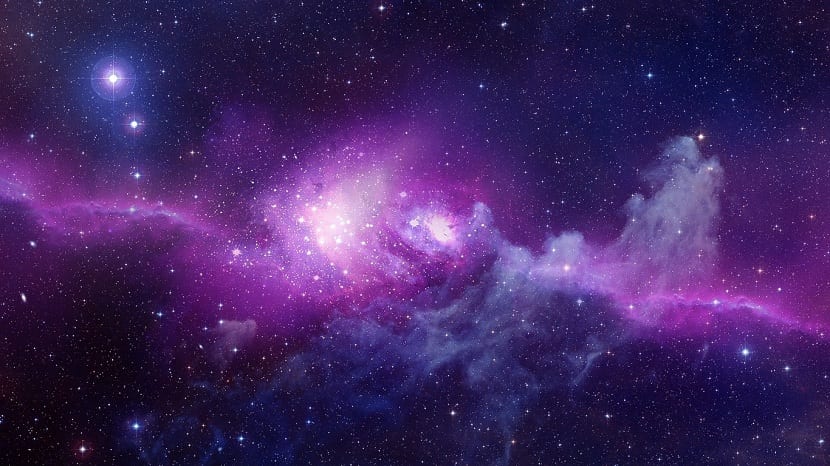
Today we continue with another article from this astronomy section. We have seen the characteristics and dimensions of the Solar system and some planets like Mars, Jupiter, Mercury, Saturn y Venus. Today we have to visit the nebulae. You've probably heard of them, but you don't know exactly what it is. In this post we are going to deal with everything related to nebulae, from what it is, to how they are formed and what types exist.
Do you want to learn more about nebulae and our Universe? You just have to keep reading 🙂
What is a nebula?
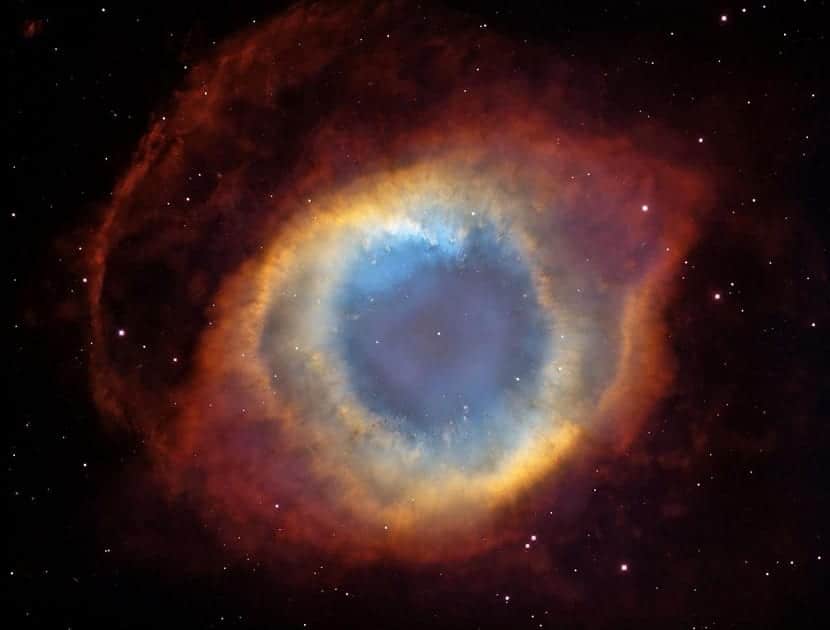
Nebulae, as their name suggests, are gigantic clouds that take strange shapes in space. They are made up of concentrations of gases, predominantly hydrogen, helium and star dust. As you know, throughout the Universe there is not only a galaxy as was thought decades ago, but there are millions. Our galaxy is the Milky Way and it is located next to our neighbor, Andromeda.
Nebulae can be found in galaxies that are irregular and in others that are aspirated. They are quite important in the Universe, since stars are born inside them from a condensation and aggregation of matter.
Despite the fact that, at first glance, They are just clouds of gas and dust not all nebulae are the same. Next we are going to analyze each type of nebula to know them in detail.
Types of nebulae
Dark nebulae
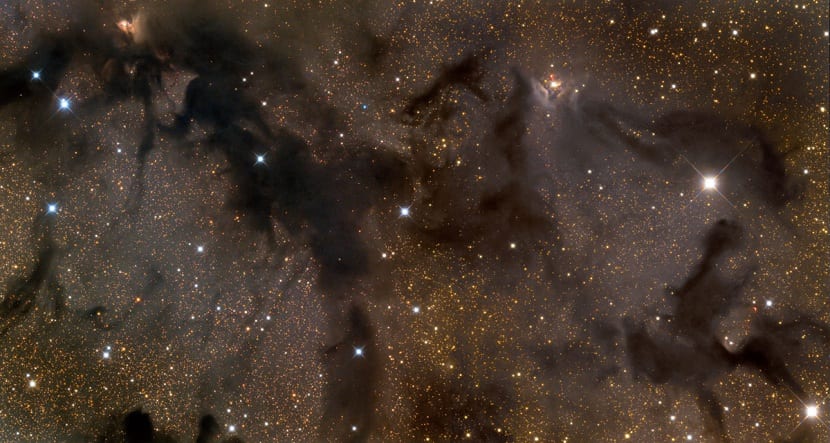
A dark nebula is nothing more than a cloud of cold gas and dust that does not emit any visible light. The stars they contain are hidden, since they do not emit any type of radiation. However, the dust from which these clouds are formed it has a diameter of just one micron.
The density of these clouds is as if it were that of cigarette smoke. These small grains of material come together to form a number of molecules like carbon, silicate or a layer of ice.
Diffuse reflection nebulae

This type it is composed of hydrogen and dust. We remember that hydrogen is the most abundant element in the entire Universe. Reflection nebulae have the ability to reflect visible light from stars.
The powder has the distinction that it is blue in color. The nebulae around the Pleiades are excellent examples of this type.
Emission nebulae
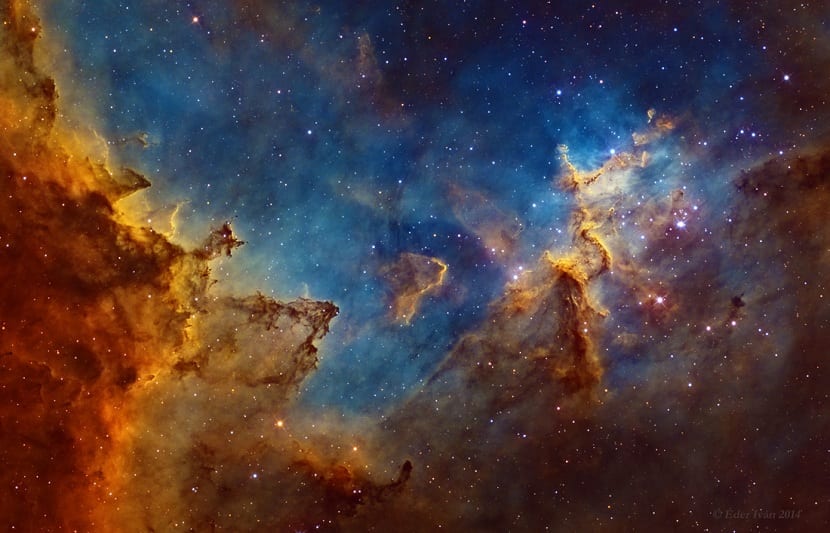
This is the most common type of nebula, they are visible and emit light due to the energy they receive from nearby stars. To emit light, hydrogen atoms are excited by the powerful ultraviolet light from nearby stars and ionize. This is, It loses its only electron to emit a photon. It is this action that generates the glow in the nebula.
Stars of the spectral type O can ionize gas within a radius of 350 light years. For example, the Swan Nebula or M17 is an emission nebula discovered by Chéseaux in 1746 and rediscovered by Messier in 1764. This nebula is very bright and pink in color. Visible to the naked eye at low latitudes.
When they turn red, it means that much of the hydrogen is ionized. It is home to numerous young stars born from the irradiation of gas by the nebula. If it is observed in infrared the amount of dust can be observed in favor of the formation of stars.
If we entered the nebula we could see an open cluster composed of about 30 stars obscured by gases. The diameter is usually around 40 light years. The total mass that forms in nebulae of this type is about 800 more than the mass of the Sun.
Clear examples of this nebula is M17, which it is located 5500 light years from our solar system. M16 and M17 lie in the same spiral arm of the Milky Way (the Sagittarius or Sagittarius-Carina arm) and perhaps part of the same complex of gigantic interstellar matter clouds.
Planetary nebula
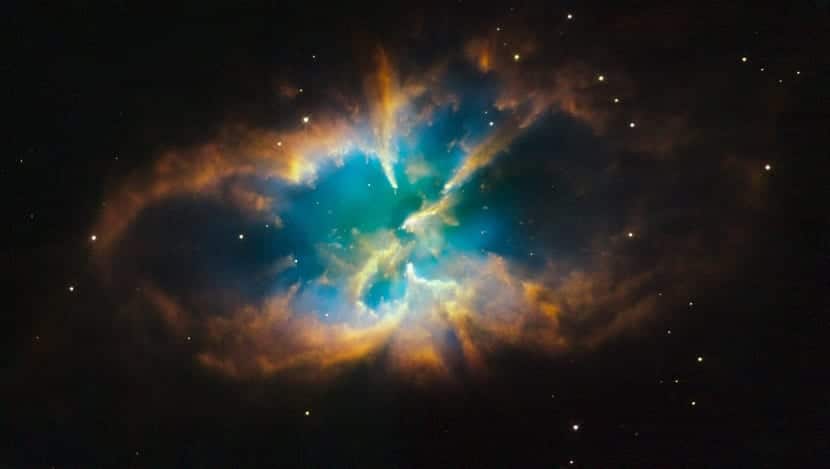
This is another type of nebula. The fuzzy they are associated with the birth of stars. In this case we mean the remains of the stars. Planetary Nebula comes from the first observations that were had of these circular-looking objects. When the life of a star reaches the end, it shines mostly in the ultraviolet region of the electromagnetic spectrum. This ultraviolet radiation illuminates the gas that is expelled by the ionizing radiation and therefore the planetary nebula is formed.
The colors that can be observed from the various elements are at a very specific wavelength. And it is that hydrogen atoms emit a red light, while oxygen atoms light up green.
The Helix Nebula is a cosmic star often photographed by amateur astronomers for its vivid colors and its resemblance to a giant eye. It was discovered in the 18th century and is located about 650 light years away in the constellation Aquarius.
It can be said that planetary nebulae are remnants of stars that, in the past, were similar to our Sun. When these stars die, they expel all the gaseous layers into space. These layers are heated by the hot core of the dead star. This is called a white dwarf. The brightness that occurs can be seen in both visible and infrared wavelengths.
Reflection and emission nebulae
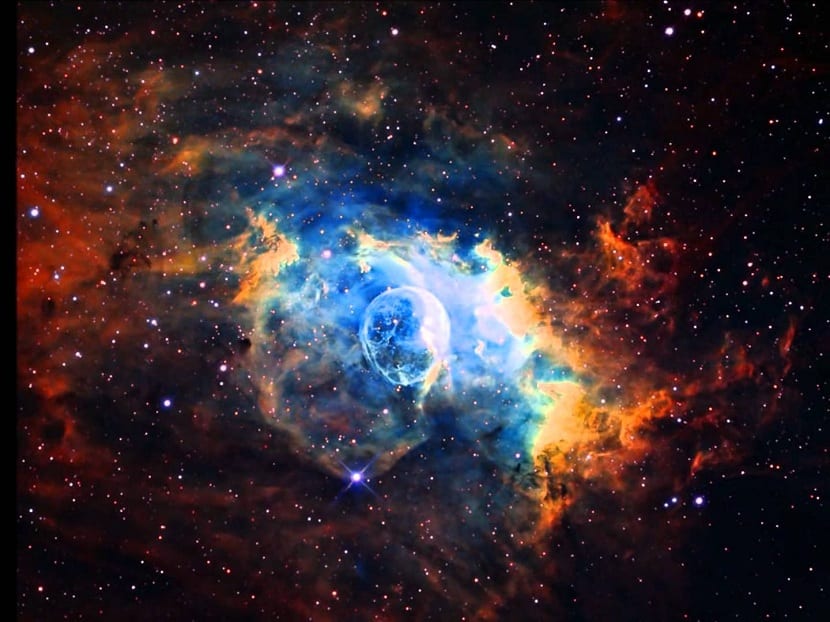
We cannot finish this post without mentioning that there are nebulae that maintain the two characteristics mentioned in the previous types. Most emission nebulae are typically 90% hydrogen, the remainder being helium, oxygen, nitrogen, and other elements. On the other hand, reflection nebulae are usually blue because that is the color that disperses more easily.
As you can see, our Universe is full of incredible elements that can leave us speechless. Have you ever seen a nebula? Leave us your comment 🙂
hello I loved how clear you were in explaining what nebulae are. How can I read everything you wrote about the universe?